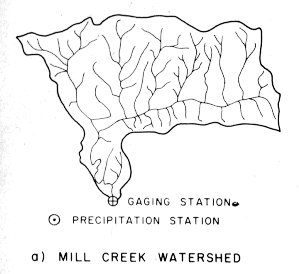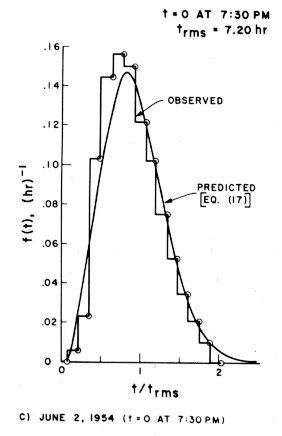Christmas Eve, 1991
Today, I prepare for Christmas. The University of Houston's College of Engineering presents this series about the machines that make our civilization run, and the people whose ingenuity created them.
Thirty-five years ago, I heard the pastoral theologian Bob Rodenmayer preach on Christmas Eve. He called Christmas the "Great Watershed of History." The phrase stayed with me. It's a notion that keeps yielding up new insights.
A watershed is a region where all rain gathers into the same outlet river. Rodenmeyer meant that every event before the first Christmas had gone one way. Every event that followed would flow another way entirely.
Years later I sat in a lecture on rainfall runoff. As I listened, that Christmas image came back. I thought about the insistence of gravity. I saw drops rolling off leaves and twigs to join one another. Trickle joining trickle to form rivulets. Rivulets merging into streams and streams into rivers.
Suddenly the penny dropped. I realized that raindrops find their way to the river the same way molecules seek their energy levels. By nightfall, I had a new theory of rainfall runoff. In an odd leap of the mind, I made the watershed into a thermodynamic system. It may've been the most creative thing I ever did.
And so each Christmas I think about watersheds. I think about those instants when our lives change -- when the flow of events diverts to an entirely new river.
Your Christmas may be a secular holiday. It may be a holy feast day. Either way, it signals watershed. Christmas cannot help but promise change, renewal, and mystery as well.
Every creative act contains those same elements -- change, renewal, and mystery. Every creative act is a watershed that alters our life irrevocably. Every creative act holds that Christmas sense of potential change and birth pain.
This is the season when depression and despair rise. But only when we give up hope of crossing any watershed. Poet Carol Drake anticipates Christmas with the words, "joy and terror in the winter night." She reminds me that my worst Christmasses are the static ones -- the ones when I fail to stand in awe of impending change.
This year the incipience is electric. I mean for the events in my life to merge and flow into some new, untraveled river. And that's my Christmas wish for you. I wish you pain and joy, growth and change. I wish you disruption and renewal.
I wish you a moment in your own history when you turn from one thing into another. I wish that you might find your creative center. I wish that you might cross the great watershed in your own life and emerge as a new being.
I'm John Lienhard, at the University of Houston, where we're interested in the way inventive minds work.
(Theme music)
The complete poem by Carol Christopher Drake is the text of Hymn Number 69 in the 1982 Episcopal Hymnal. She, as it just so happens, listened to the same Christmas sermon I cite here.
The thermodynamic analysis of rainfall runoff is developed in the following four papers.
Lienhard, J.H., A Statistical Mechanical Prediction of the Dimensionless Unit Hydrograph. J. Geophys. Res, Vol. 69, No. 24, Dec. 1964, p. 5231.
Lienhard, J.H., and Meyer, P.L., A Physical Basis for the Generalized Gamma Distribution. Q. App. Math, Vol. 25, No. 3, 1967, p. 330.
Lienhard, J.H., and Davis, L.B., Jr., An Extension of Statistical Mechanics to the Description of a Broad Class of Macroscopic Systems. Zeit. f. Ang. Math. u. Mech, (ZAMP), Vol. 22, No. 1, 1971, p. 85.
Lienhard, J.H., On The Prediction of the Dimensionless Unit Hydrograph, Nordic Hydrology, Vol. 3, 1972, pp. 107-109.


Two figures from the first reference above: Left: a typical Illinois watershed. Right: predicted and observed rainfall runoff following a sudden storm upon that watershed